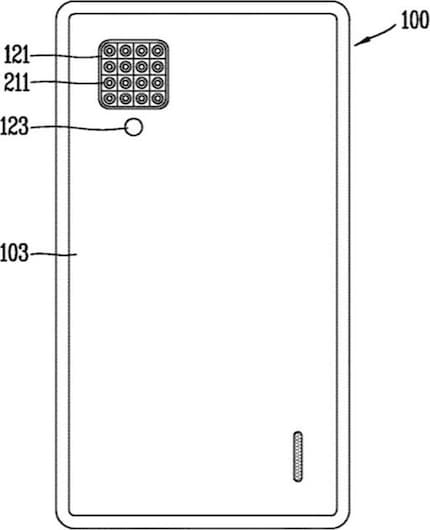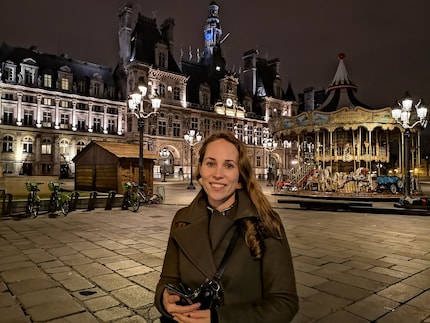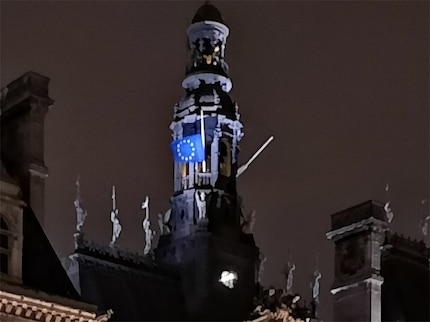
16 cameras? What smartphone cameras are all about
Up to 16 cameras will soon be built into a single smartphone. That's nonsense, because the pictures don't get better just because there are over a dozen lenses watching. The decisive factor is the software that processes the image information.
Huawei has started. The P20 Pro came with three cameras in the spring. Samsung followed suit in autumn and went one better: The Samsung Galaxy A9 has four cameras. LG has gone one better and filed a patent for 16 cameras on the back of a smartphone.

And then there's Google. The Google Pixel 3 brazenly still only has one camera at the back. Nevertheless, Google's Pixel cameras are still among the best cameras on the market. The reason: it's not about the number of cameras.
One camera is enough
Comparing a smartphone camera with an SLR or a system camera like my Sony a7s II does both devices an injustice. Malicious tongues claim that smartphones make photographers superfluous. But the differences lie not in the operation but in the function of the technology.
A system camera like the a7s II takes exactly the picture you see in the viewfinder. Every setting is one that you have made. You work with an interplay between white balance, sharpness, aperture, light and shadow and a variety of other factors.

This applies to the manual mode. In automatic mode, which is often frowned upon by photographers, the expensive system camera does what the smartphone does by default: it does all the work for you.
A smartphone is designed to take the best snapshots possible. To do this, it calculates all the things you should set manually on a Sony a7s II in a matter of seconds. Smartphones often don't have a manual mode. In some cases, this can be retrofitted with apps such as Open Camera for Android and the iPhone has had a limited manual function built in since iOS 8. However, even with the best implementation of the Open Camera or the Apple Manual Mode, the hardware often throws a spanner in the works. The aperture is often a purely mathematical exercise and only a few phones have a manual aperture. The same applies to the zoom function. If a lens is not technologically capable of zooming, then it simply cannot zoom.
Theoretically, this could be changed. But my a7s II has controls and dials that regulate all sorts of things for me. On my smartphones, I always have to go into a menu, then inaccurately adjust a slider and hope for the best. I operate my a7s II blindly because I know where all the controls are. I always look at my smartphone with difficulty when I want to take a slightly more ambitious picture away from the standard settings.
In short, a camera lens on a smartphone fulfils a completely different function to the lens on an SLR or system camera. On a smartphone, it is theoretically enough if one lens reacts quickly and records as much image information as possible.
The software takes care of the rest.
The tricks with the software
It's the software that makes smartphones stand out. After all, a photo app is not just something that takes a few photos, but also performs a complex series of calculations in a very short space of time. Nowhere is this more evident than in night shots.
Night shots with smartphones have little to do with traditional photography. This is because the lens on the phone, which records as much information as possible, takes a series of images that are then put together by the camera app software. The colour values, brightness and all the other image attributes are then calculated in such a way that the image contains as many beautiful details as possible.
This can look like this.

At first glance, there really isn't much wrong with this picture. Video producer Stephanie Tresch is standing in front of the Hôtel de Ville at 11.07pm and I'm trying out the then-new Huawei P20 Pro. I press the button, the phone displays a countdown in a circle and at the end, after a short calculation time, the image above appears.
If you zoom into the picture, you can see things like the flag in front of the tower and the tower itself.

The Huawei camera app isn't sure about Stephanie's hair either. She seems to have a halo.

The snapshot with Stephanie on it is in fact not a picture, but a stitched object created from many pictures and calculated by an AI. Hence the small anomalies that make an image suitable for social media but not particularly valuable in photographic terms.
The decision in the computer
No photo that comes out of a smartphone is the picture that was taken. This is because a camera app makes an incredible number of calculations, embellishes and optimises images within a fraction of a second. This is true even if you don't set any special filters or lighting effects.
A smartphone is designed to quickly deliver beautiful snapshots for chat messages and social media. It's thanks to the eagerness of hardware manufacturers and software developers that these images are getting better and better, and are increasingly taking on the images of the world's photographers. They have already destroyed the market for compact cameras. After all, who needs a small Ixus or a Cybershot when a mobile phone delivers images that are just as good?
The game is decided in the app, not in the lens. That's why camera apps are in high demand.
Google is currently ahead of the game. The Night Sight system produces impressive images in the dark. Night shots look so good on the Pixel 3 that coders around the world have set about making the app available for hardware other than Google's own. With success. Several dozen so-called app ports are free to download. Developer Celso Azevedo has compiled a list of recommended versions to help you find your way through the chaos of apps on the site. However, this does not mean that these versions will necessarily work on your phone. Just like me, you'll have to try them out. If the app crashes after starting or doesn't display or perform properly for some time, then simply use the next one.
General guidelines for your app choice:
- Try ⌘/CTRL+F and then the brand of your smartphone.
- If there is a compatible smartphone listed that has the same system-on-a-chip (SoC) as your smartphone, you can try that. ⌘/CTRL+F and then Snapdragon, Exynos or Kirin could help.
- Huawei currently seems to be losing out due to the trade sanctions imposed by the USA and the fact that the Kirin platform is not similar to the Snapdragon in many respects.
So, that's it. I'm off to poke around. Have fun with it, because it's definitely worth it. Night Sight is great.
Journalist. Author. Hacker. A storyteller searching for boundaries, secrets and taboos – putting the world to paper. Not because I can but because I can’t not.
Interesting facts about products, behind-the-scenes looks at manufacturers and deep-dives on interesting people.
Show all